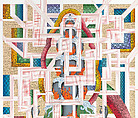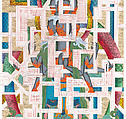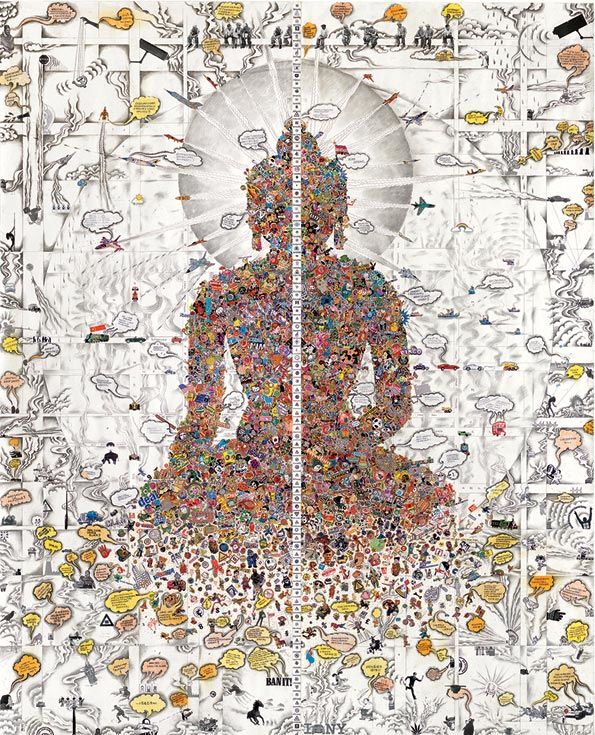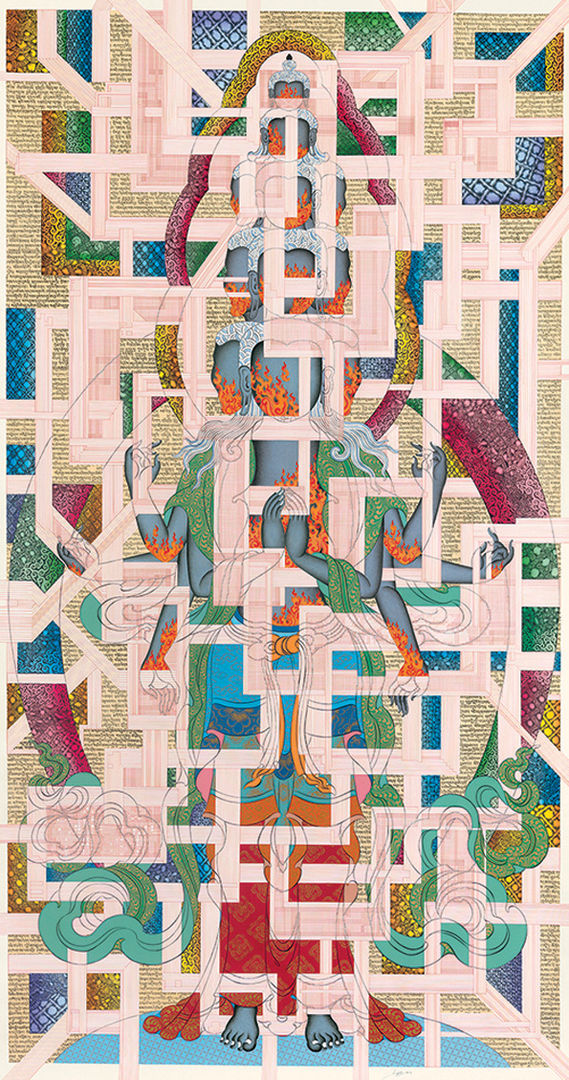Pin drop silence: Eleven-headed Avalokiteshvara
Not on view
Tenzing Rigdol’s figure of Avalokiteshvara stands in a radiant mandorla, burning with the light of his enlightenment or nonexistence, while his eleven heads comment on realms of knowledge and simultaneous realization. His primary hands are held in anjali mudra, the gesture of veneration, and thus the figure makes direct reference to Shadakshari Lokeshvara and, by extension, to the Dalai Lama, who is understood to be an incarnation of Avalokiteshvara. Surrounding the central figure is a background that is structured or perhaps fractured by a grid that refers to both tangka underdrawings and to the design structure of Tibetan carpets. The similarity to carpet design is also evident in the use of graphic, flat color. Texts associated with the veneration of this deity pervade the composition. Because the deity’s face has been omitted, the viewer is denied any direct or charged devotional contact with this divine being, as eye contact is seen as the primary means of accessing the divine. By omitting the eyes, Tenzing Rigdol has effectively taken the image out of a devotional context and forces the viewer to consider it as an independent work of art—the creation of an individual.
Due to rights restrictions, this image cannot be enlarged, viewed at full screen, or downloaded.
This artwork is meant to be viewed from right to left. Scroll left to view more.











